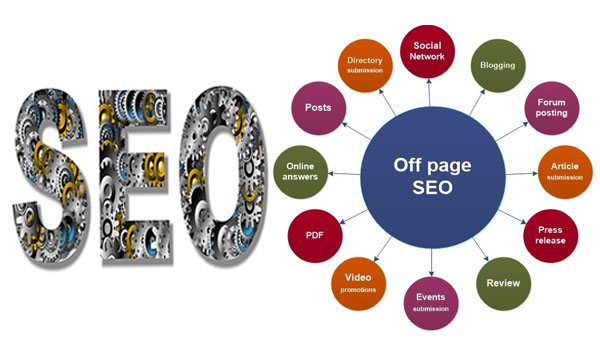One of the most overlooked benefits of eCommerce is that you can take your business from being a local one-person shop to a continent-spanning brand in a flash. e-commerce business throws open the global market with an ease that never existed before.
Think Amazon, eBay, Alibaba, Walmart, and the likes. In their beginning days, they were all restricted to few regions or at most countries where they found it easy to do business. With time, they ventured into cross-border commerce thus taking their business growth and revenue to great heights. After all, cross-border commerce is expected to touch $1 Trillion by 2020. It is a gold mine worth digging into.
If you are skeptical about venturing into cross-border commerce, here are some factors that confirm why it is a worthwhile venture:
- People want a diverse range of products
- They want genuine products straight from manufacturers
- They want international brands in local flavors
- They want the convenience of online shopping
All put together the journey from local to global eCommerce seems one that is worth taking.
If your eCommerce business is stuck in the local borders and if you want to unleash its presence across borders, here is how to do it.
Five-step method to take your E-commerce business from local to global
From a 30,000 feet view, there are some things that you have to do and decide to take your business global. This includes identifying target markets, identifying customer preferences, mastering local business practices and so on. Here is a quick walk through all of the necessary features.
#1 Identify country-wise target markets
You cannot sell to the globe at large. But, you can sell to several countries on various scales. Naturally, the first step to becoming a global e-commerce business begins with identifying the countries where you can set up shop.
You can do that by following your competitors’ global presence. Or, you can do an independent research on your own. Chances are that you might stumble upon places where your competitors are yet to arrive.
And, you can also go to Google Analytics and see from which parts of the world people are searching for the products that you are selling. If you observe a specific concentration of target audience from a specific location, that is where you should tap into in the first place.
#2 Get a grip of the local customer buying behavior
Don’t assume anything. What worked in your country for your target market may not work in another country. The customer buying behavior, expectations, product requirements, legal framework and so on could be entirely different.
So gain an understanding about the local customer buying behavior before pouring in funds to grow a business in any country. There is a fat chance that you might have to tweak your product strategy, pricing, supply chain and so on to meet the expectations of the target market.
#3 Show that you’re trustworthy
Like in brick and mortar selling, eCommerce also calls for trust as a critical USP. Without trust, your eCommerce business can only sell to a certain extent. Cracking an international market would be a difficult thing if your eCommerce website does not look trustworthy.
To make it trustworthy your website needs certain elements like an SSL certificate such as RapidSSL certificates, trust seal, authorized dealer icon, genuine product label and so on. In short, the customers who come to your eCommerce store should have the assurance that your website is indeed good to trust their money with.
There is also the need to comply with international compliance requirements like PCI, GDPR, etc. You might also want to put up notifications or alerts showing that your website is indeed compliant with all those requirements.
Read: How to Start A Blog Step By Step Guide
#4 Start small. Scale big. Repeat
Piggybacking on the last point, venturing overseas means you will be making plenty of decisions with no proper backing in hand. So starting small, picking a small region to sell to, taking minimal risks will pay off. In fact, consider the first months to be experimental before you get an understanding of the products or regions where your online business can dig a treasure.
Keep gaining intelligence about what kind of products sell better, which areas where the sales charts are the healthiest, where legal requirements are in your favor and so on. Once this intel is gathered, scale your business to gain maximum gains. Repeat the process to grow your business.
Note: What works in one country may not work in another. For instance, what works for IKEA in the Philippines may not work for it in India. There is a need to test waters in each country and region before scaling it.
#5 Arm your business with international payments
The United States of America transacts with dollars. Mexico deals in Pesos. UK deals in Pounds. China deals in Renminbi. Japan uses Japanese Yen. India uses Rupee. So, typically every country has its own currency. Although USD is used as a benchmark for measuring, the world does not use it regularly for trade purpose.
Your target audience would want to use their own country’s currency for buying and selling. In addition to the currency, they would also expect the business to provide payment methods like online banking, credit/debit cards, digital wallets and so on.
Keep in mind to make it easy for your customers to buy from your eCommerce business easily. If you are a multi-vendor eCommerce store, then make sure sellers can use any mode of payment that they find easy to use.
Conclusion
Taking a business from local to global is no easy feat. What we have outlined in this blog is only a rough framework of what needs to be done. There is so much groundwork that needs to be done to bring the idea to action. The toughest nut to crack would be the legal framework. Getting legal sanctions, setting up local office spaces, setting up bank accounts, and much more needs to be done. Once these are done it will be easy to scale your business on a global scale.































